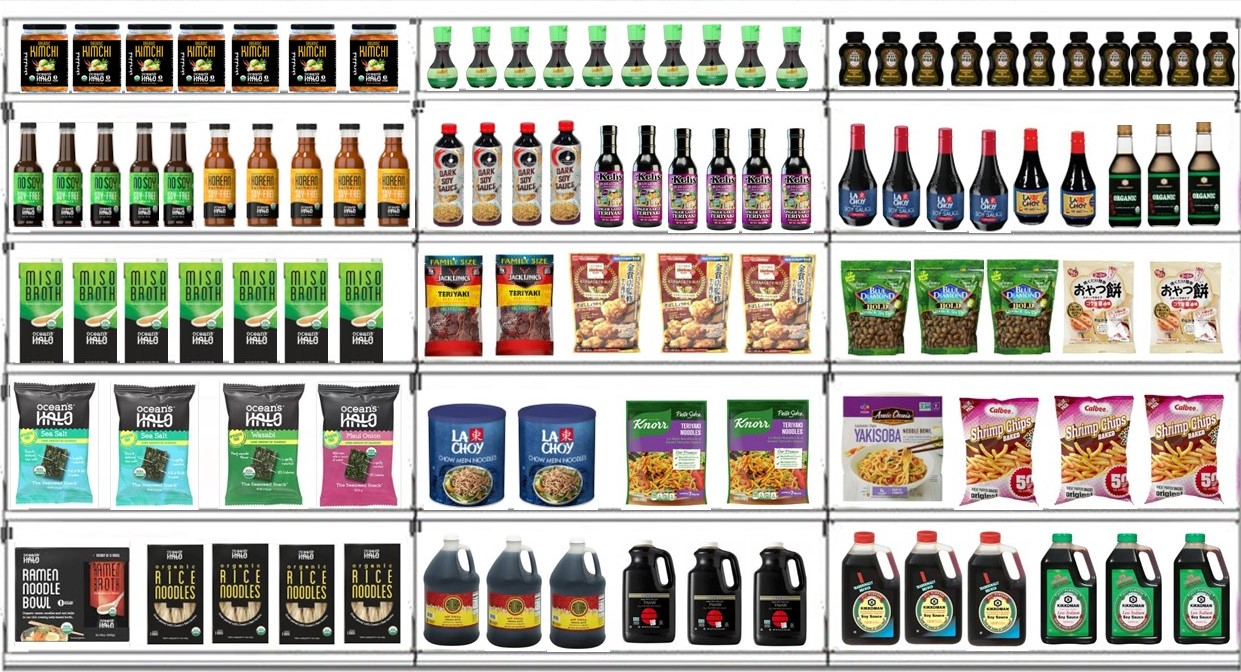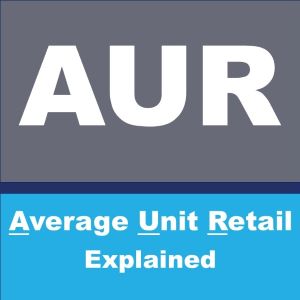With all the advances in home delivery and store pickup, we sometimes forget that in-store shopping is still a powerful strategy in retail sales. Most buying decisions are still made at the shelf, and product placement in the store is key to driving sales whether based on volume or margin.
Retailers have to understand shopping habits and how to place product on the shelf or in a display to maximize that retail space. To plan for optimal use of every inch of a retail store and to collect data on shopping trends, planograms help retailers adjust item placement to drive sales.
What Is a Planogram?
A planogram (POG) is a schematic diagram or model used to plan a retail store layout by mapping out product placement, displays, and point-of-sale locations in an effort to maximize sales.
This is an example of a planogram:

Why Planograms Are Important
In a brick-and-mortar store, space is a valuable commodity. Planograms aid in optimizing shelf space for product and floor space for displays to gain the most sales. The advantages for using planograms include:
Using Shelf and Floor Space Wisely
Walmart understands the importance of keeping costs low to improve the supply chain. This low cost philosophy doesn’t stop once the items arrive at the Walmart store; using a planogram helps to not waste space.
Part of Walmart (or any retailer) keeping costs down includes making the most of its store space. Using a planogram helps ensure each shelf and square foot of floor space is working efficiently to drive sales and customer satisfaction. For store employees, the planogram aids in keeping floor stock organized and product at optimal levels.
Driving Sales Through Shopper Data
A good planogram does much more than map out where product should be placed in a store. It enables retailers to review their customers’ shopping habits and improve on where items are placed as well as the effectiveness of feature displays. Having this data creates a clear direction on how product should be placed to drive sales.
An example of shopper habits collected through planogram data is merchandise featured on a 4-way display. A 4-way display is usually placed in a retail store aisle with different items featured on each of its four sides. Retail analysts have known for years that the merchandise displayed on the inner shelves sells faster than merchandise on the two sides facing the aisles. Why? Most customers are not comfortable standing in an aisle looking at product while other shoppers are walking behind them. It can make them feel in the way or uneasy.
To resolve this issue of the slower-moving merchandise on the aisle-facing shelves of a 4-way, the planogram can be used to rotate the merchandise periodically.
Maximizing Product Placement for Customers
Using a planogram is not only an advantage for retailers and suppliers, but it has benefits for the shopper as well. A large retailer like Walmart has thousands of locations carrying thousands of items. The planogram gives each store a specific guide for familiar product placement (i.e., milk and bread at the back of the store, produce near the front, etc.) with some flexibility to customize features and space for local needs.
What Are the 6 Types of Planograms?
Planograms are a way to map out how the customer will see the product. It’s important to strategize what kinds of items will be at the shopper’s eye level, what will be on feature, or what will drive an impulse buy. With all the considerations to maximize space and drive sales, there are six common planograms used in retail today:
1. Product Placement Based on Market Share
The market share strategy is very common for allocating space in a planogram. For this method of planning, products are granted more or optimal store space based on their superior performance. The best space goes to the best sellers.
2. Product Placement Based on Margin
Whereas the market share strategy gives preference to items that sell quickly, the margin strategy gives preference to items where the retailer makes more money off each item sold. A greater profit margin on the item gives it a better space on the planogram where customers can locate it easily, with the goal of selling more. This enables the retailer to profit more by pushing items with a higher margin.
3. Product Placement Based on Commercial Status
This technique for prioritizing space on a planogram is based on an item’s brand recognition. Suppliers with well-known brands are given better shelf space and feature placement than lesser-known or new-to-market brands.
For example, a store shopper looking for peanut butter will most likely find Peter Pan, Jif, and Skippy at eye level in an aisle. These are all nationally known brands with loyal customers. The store brands or lower-end peanut butter options are usually on the bottom shelf.
4. Block Product Placement Planogramming
A planogram that is based on block placement is one of the easiest ways to stock items in a store aisle (and is appreciated by many customers). Block product placement simply means that all common products (i.e., cans of corn, bottles of ketchup, packages of butter, etc.) are set together on the shelf, no matter the brand, margin, or performance.
The reason most customers prefer block placement is to easily compare like products. Having all the various brands of ketchup in one place allows the customer to easily compare prices, ingredients, and packaging options.
5. Horizontal Product Placement Planogramming
The horizontal product placement planogram also gives customers a shopping advantage. In this strategy, items are stocked on the shelves side by side at the same eye level. This allows shoppers to easily compare like products of different brands on price, packaging, and ingredients.
6. Vertical Product Placement Planogramming
The final planogram strategy is to stock items vertically. In this design, related products from different brands are stocked at different shelf levels.
Planogram Planning Tips
Whether it’s your first time working on a planogram, or if you just need a fresh approach to your strategy, here are some tips to make the most of your design efforts:
Select the Right Contributors
An effective planogram comes from the combined input of several team members. It’s usually put together by a member of the modular layout team with information from the buyer, advertising, sales, and marketing. This group provides information necessary to create the planogram including shopper behavior, current sales and buying trends, sales data, company promotions, etc.
Members of the merchandise team are responsible for verifying the accuracy of the execution of the planogram. While physically in a store, they will ensure a supplier’s items are in stock and displayed correctly as per directed on the planogram.
Compare Software Packages
To assist in planogram design, there are many software packages available. Using a good planogram software package can help retailers control inventory levels effectively. It’s also helpful to retailers in building a useful visual tool of their entire store layout to see each area at a glance. Planogram software does much more than design; it helps the retailer keep track of things that impact how product should be placed (i.e., shelf space, customer traffic flow, product placement, etc.).
Factor in Item Packaging
The planogram is key to seeing what adjustments should be made to an item’s packaging to get full use of the shelf space allocated by the retailer. If a supplier’s item can fit in a smaller package, more can be stocked on the shelf at once to prevent out-of-stocks. Simple changes to a package’s design can make it more appealing to the eye and get noticed as the shopper is making the buying decision at the shelf.
Stay In Planogram Compliance
One of the most effective ways to boost store sales is to stay in planogram compliance. Sticking to the planogram does more than help sales; it can also assist store employees in maintaining stock and always knowing where to find a specific item.
Non-compliance to a planogram can result in out-of-stocks and lost sales opportunities. It’s very important that the items on the shelf match the layout on the planogram. In addition to lost sales, non-compliance will lead to lost data. If the shelves in the store do not match the planogram, there is no way of knowing how effective the planogram is or what adjustments need to be made.
Conclusion
Using a planogram helps retailers better understand their customers. Likewise, the more a retailer knows about the customer and their shopping habits, the better they can make adjustments to the planogram to make the most of retail space.
The team at 8th & Walton has over 300 years of supply chain experience. From purchase order to checkout, our team can help you maximize your supply chain process and your relationship with Walmart. To connect with one of our advisors, complete the form below to schedule your free consultation.



